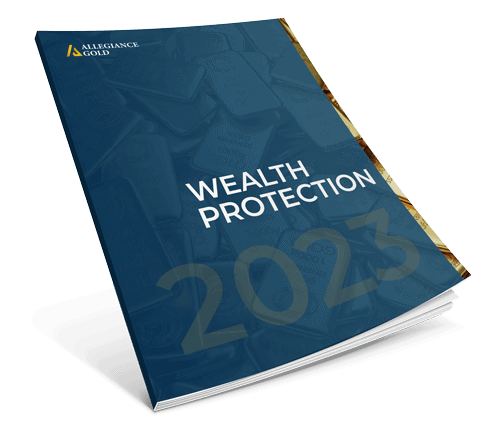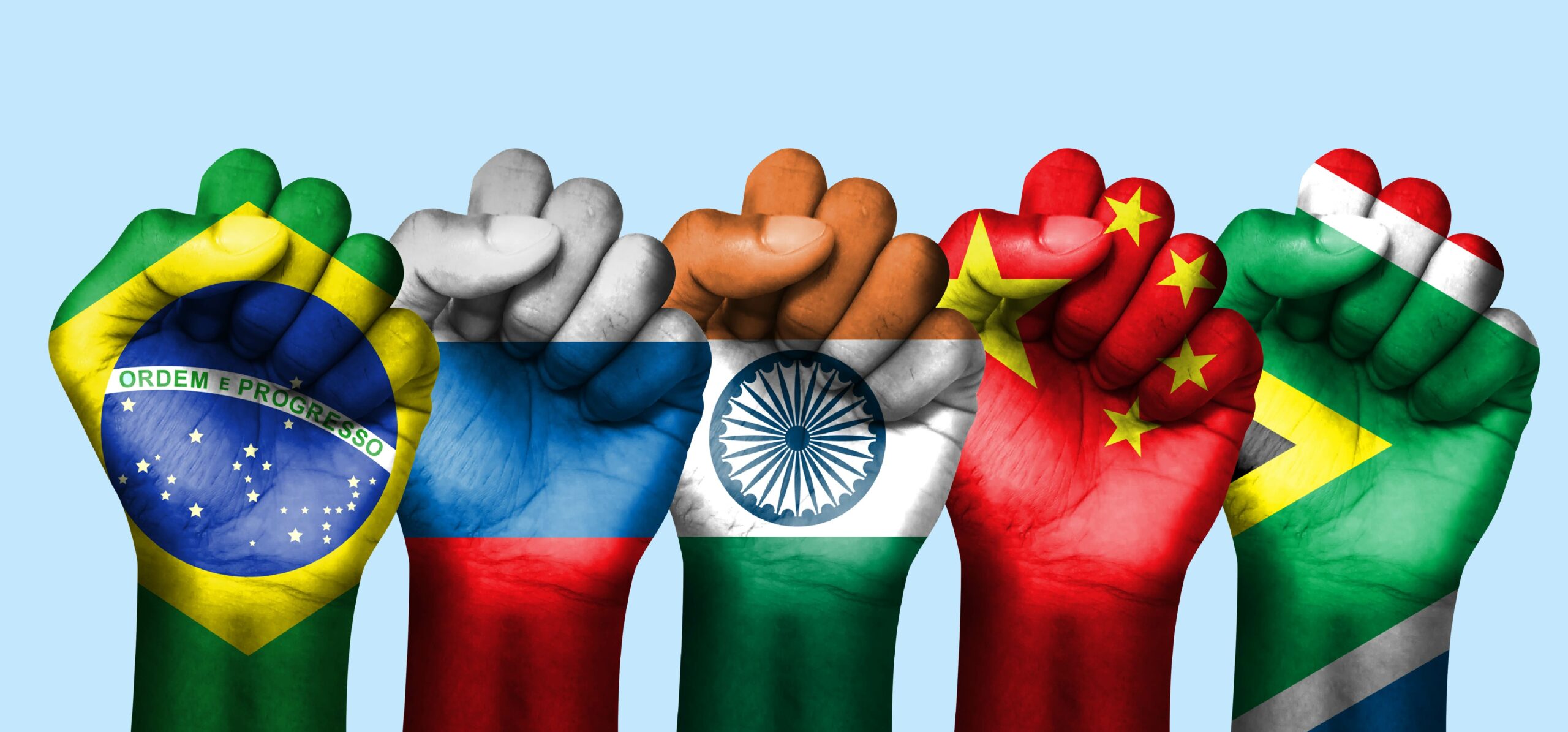Over the past decade, China has continued its relentless campaign to make itself the worldwide economic center of gravity, slowly yet intentionally eating away at America’s economic authority in the international balance of power.
And now, sensing weakness in Washington, China has made increasingly bold moves to tip the scales, overtly strengthening ties with Moscow and brokering a rapprochement between Iran and Saudi Arabia.[1]
At the heart of it all—underlying each of these strategic initiatives—has been a concerted, decades-long push toward de-dollarization. And, with the help of Brazil, Russia, India, and South Africa, these nations have formed an informal trading and currency union known colloquially as the BRICS Block.
Their goal is to create a new, alternative digital trading currency that weakens the greenback’s sway over international affairs. But how does this de-dollarization push impact the global financial system? Better yet, how does it affect us domestically?
While we can only speculate, here’s what the experts at Allegiance Gold believe is on the horizon.
What Is BRICS?
When the title was first coined by Goldman Sachs economist Jim O’Neill in 2001, BRIC (Brazil, Russia, India, China) economies represented the world’s fastest-growing and emerging market economies. He believed they would replace the US and Europe as the key engines of the world economy.
And while they do account for 42% of the global population, 23% of GDP, 30% of the territory, and 18% of international trade, only China and India are performing in line with expectations. Although they have set themselves up as a would-be challenger to the G7, so far they haven’t supplanted them as was predicted.[2]
The reasons for this are complicated.
Generally speaking, it’s likely due to a combination of bureaucratic corruption coupled with diverging long-term economic interests and trajectories.
Even so, some of the group’s notable actions in recent years include:[3][4][5]
- In 2014, with $50 billion in seed money, BRICS nations launched the New Development Bank as an alternative to the IMF and World Bank, providing a liquidity source for developing and emerging economies.
- In 2019, BRICS countries distanced themselves from the Western Bloc, with India, Brazil, South Africa, and China all declining to take part in the sanctions against Russia.
- In 2022, Russia began spearheading the development of a new currency that could be used for cross-border trade by BRICS nations.
- In 2023, South African Foreign Minister Naledi Pandor hinted at a growing list of nations who had signaled interest in potentially joining BRICS, including Saudi Arabia, the United Arab Emirates, Egypt, Algeria, Argentina, Mexico, and Nigeria.
- In 2023, Brazil and China signed an agreement to trade in their own currencies, thus abandoning the greenback as an intermediary.
- In 2023, while on a state’s visit to Beijing, Brazil’s president, Luiz Inàcio Lula da Silva, said: “Every night I ask myself why all countries have to base their trade on the dollar.”
- In 2023, taking the BRICS lead, Indonesia recently announced the move toward a local trading currency with neighboring Asian countries like Thailand, China, Japan, and Malaysia.
So, What Does This Mean for the Dollar?
The dollar is not dead yet. As the world’s reserve currency, it still remains a strong bet on the economic block (but the tide is shifting). As Fisher Investments notes:[6]
“While there is so much chatter about the dollar losing its status, look at actual dollar-use data and you will find it is still very much in demand and widely held. There isn’t a great way to track how much world trade uses dollars, but the BIS estimates about half of global trade is invoiced in dollars, despite America accounting for only around 10% of global trade.”
In light of the global pandemic and the war in Ukraine, the greenback outperformed practically every other major currency. According to Forbes:[7]
- EUR/USD: One euro buys $1.07 now, compared to $1.09 a year ago
- USD/JPY: One dollar buys 134.29 yen, versus 117.50 a year ago
- USD/CHF: One dollar buys 0.91 Swiss francs, versus 0.93 a year ago
- GBP/USD: One British pound buys $1.21 now; bought $1.30 a year ago
- USD/CAD: One dollar buys C$1.37 now, compared to C$1.27 a year ago
Similarly, according to IMF data, more than 58% of global reserves are held in US dollars, more than double the share of the Euro, the second most-held reserve currency.[8]
Unfortunately, its power will likely erode incrementally over time, especially as the BRICS nations continue their aggressive push to reduce their dependence on the American dollar.
We have already seen ripple effects hit the Gold market…
For instance, in 2022, global Gold demand reached 4,741 tonnes, the highest in more than a decade. And, Central Banks purchased a record 1,136 tonnes of Gold—worth some $70 billion—the highest on record since 1950. This purchasing was led by emerging economies like India, Russia, and Turkey.[9]
Similarly, the rising adoption of cryptocurrencies, plus the creation of new currencies and central bank digital currencies, have all contributed to the erosion of the US dollar’s dominance.
Speculation for the Global and Domestic Gold Market
With ongoing geopolitical and macroeconomic turbulence, Gold has been—and likely always will be—a currency safe haven. As a trusted hedge against risk and inflation, it retains its value (and usually rises in value) during turbulent times. And, unlike currencies and bonds, it doesn’t rely on a government or issuer.
This last point is particularly relevant, given the inflationary spiral and the threat of bank collapses—as occurred with Silicon Valley Bank, which failed in part due to rapid bond devaluation caused by interest rate increases in the FED’s attempt to tamp down inflation.
But what do these trends mean for the domestic and global Gold market?
- Increased Gold demand drives higher prices
- Continued diversification away from the US dollar – As BRICS countries push against the dollar’s supremacy, the trend of central banks purchasing precious metals as an asset diversification away from US Treasuries will likely continue, potentially weakening greenback dominance as the primary reserve currency.
- Currency volatility and Gold price resilience – As dollar dominance erodes, and alternative currencies gain prominence, currency fluctuations could create even more value in the Gold market, potentially leading to a continued surge in its pricing foothold.
Allegiance Gold—A Hedge In Times of Global Uncertainty
Many experts suggest that the decline of the U.S. dollar’s dominance could be a slow erosion. On the other hand, it could be a sudden paradigm shift. As BRICS nations seek to undermine American economic influence on the global scale, the promise of the dollar remains shrouded in uncertainty.
Although it’s impossible to predict whether the BRICS push for de-dollarization will be successful, we have witnessed both private and public trends of asset diversification, with Gold leading the way as a time-tested asset.
To protect yourself in times of rampant inflation, bank collapses, and geopolitical strife, Gold is a hedge against uncertainty—a safeguard against economic turmoil, a weakened dollar, and market shifts.
Want to learn more about the benefits of Gold?
To start your journey, apply for a custom precious metals IRA today or contact us for more information.
Request our FREE investment guide to uncover insider tips and strategies for protecting your wealth.

Sources:
[1] Economist. China brokers an Iran-Saudi rapprochement. https://www.economist.com/middle-east-and-africa/2023/03/10/china-brokers-an-iran-saudi-rapprochement
[2] DW. When BRICS hit a wall. https://www.dw.com/en/have-the-brics-hit-a-wall/a-51182058
[3] DW. A new world order? BRICS nations offer alternatives to the West. https://www.dw.com/en/a-new-world-order-brics-nations-offer-alternative-to-west/a-65124269
[4] Foreign Policy. A BRICS Currency Could Shake the Dollar’s Dominance. https://foreignpolicy.com/2023/04/24/brics-currency-end-dollar-dominance-united-states-russia-china/
[5] RT. BRICS de-dollarization push gaining momentum – Jakarta. https://www.rt.com/business/575111-brics-dollar-trade-indonesia/
[6] Fisher Investments. Is Gold Signaling De-Dollarization Looms? No. https://www.fisherinvestments.com/en-us/insights/market-commentary/is-gold-signaling-de-dollarization-looms-no
[7] Forbes. Why Is The U.S. Dollar So Strong Right Now? https://www.forbes.com/advisor/investing/strong-dollar/
[8] IMF. https://data.imf.org/?sk=E6A5F467-C14B-4AA8-9F6D-5A09EC4E62A4
[9] Reuters. Central banks bought the most gold on record last year, WGC says. https://www.reuters.com/markets/commodities/central-banks-bought-most-gold-since-1967-last-year-wgc-says-2023-01-31/



 Custom Precious Metals IRA
Custom Precious Metals IRA Gold IRA
Gold IRA Gold Products
Gold Products Silver Products
Silver Products Platinum
Platinum